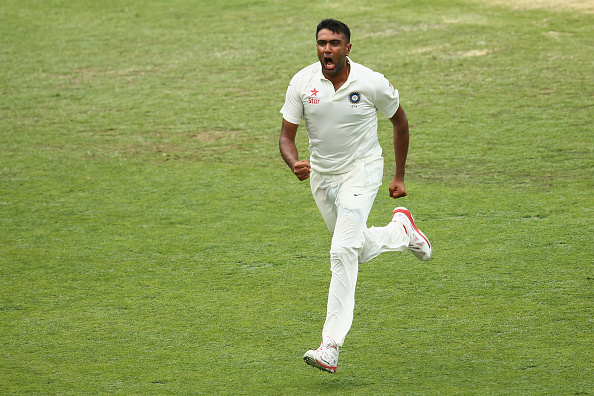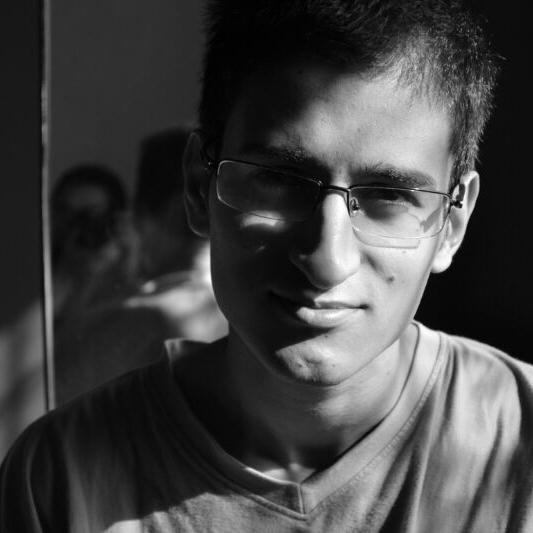Where does Ashwin stand when compared to spinning greats
When Anil Kumble, the protagonist of one of my favorite cricketing memories as an Indian kid , decided to call it a day, Harbhajan Singh was seen as the obvious replacement for the skilled leg spinner.

Who would have thought that a player with an experience of just 5 Tests would overtake him and ensure that Bhajji would represent his country just five times after Jan 4, 2012? Ravichandran Ashwin destroyed a talented New Zealand side almost single-handedly claiming 13 wickets in the last Test in Indore and is the leading Test wicket taker in this calendar year.
The time to ask if Ashwin is currently the best bowler in the world is slightly past time. The question now is just how good is Ashwin when compared to the best spinners the world of cricket has ever seen namely, Muttiah Muralitharan and Shane Warne. the duo
|
Test Record |
Innings Played |
Wickets |
Economy |
Average |
|
Muralitharan |
230 |
800 |
2.47 |
22.72 |
|
Warne |
273 |
708 |
2.65 |
25.41 |
|
Ashwin |
72 |
220 |
2.94 |
24.29 |
|
ODI Record |
Innings Played |
Wickets |
Economy |
Average |
|
Muralitharan |
341 |
534 |
3.93 |
23.08 |
|
Warne |
191 |
293 |
4.25 |
25.73 |
|
Ashwin |
101 |
142 |
4.85 |
31.73 |
No doubts, Muralitharan was the deadliest of the lot - be it in Tests or ODIs taking a wicket for almost every 23 runs. Warne, on the other hand, was a bit more aggressive, and being a leg-spinner was more likely to be attacked by right-handed batsmen. Ashwin's average looks high at the first glance, but it becomes better when seen in the light that batsmen have become more aggressive since the third format of the sport was introduced.
However, Ashwin outshines the other two on one account. While he was a late bloomer unlike Warne and Murali earning his place in the squad only at 25, the Indian has raced out of the blocks. Ashwin has been the fastest spinner to reach wicket-taking milestones one after the other, falling short of only the legendary Clarence Grimmett. The pre-war leggie was able to take a century of wickets in just 17 Tests, one less than the Indian ace, while Warne(23) and Muralitharan (27) took their sweet time getting there.
The 200-wicket race is a mirror image of the 100 with Grimmett achieving the feat in 36 matches and once again edging out Ashwin by just one Test. Warne and Muralitharan both gained on the Indian, however, getting to the next hundred in just 42 matches.
Advantage Ashwin?
Ashwin holds a great advantage over the Aussie-Lankan duo because of the era he plays in. Nowadays, batsmen are more likely to take on a spinner during a Test match if need be, thereby giving bowlers a much higher chance of taking wickets. This is reflected in Ashwin's strike rate as he takes a wicket in every 49.4 balls, while Warne(57.4) and Muralitharan(55) take almost an over more to send a batsman packing.
Overall numbers aside, the biggest test of any bowler comes on stranger shores. Playing in unfamiliar conditions and helping their team grind out a result is what makes good players into great players, and when they do it over a decade, the word "legend" comes into the picture.
Many people might argue that Warne would have reached even more stratospheric numbers if only he had played more in the sub-continent as the pitches offer more for spin bowlers. This could not be farther from the truth and it was evident from very early on – like his performances in his very first overseas series in 1992, coincidentally in Sri Lanka.
Having played his entire life on the bouncy pitches of Perth and Melbourne, Warne was able to claim just two wickets in sub-continental conditions. But in 1992, when he next travelled to New Zealand (two matches) and England (six matches), he returned home with 17 and 34 wickets respectively.
Muralitharan played his first overseas series in 1994 in the sub-continent itself against a strong Indian side. In the two-match series, he was able to collect 9 wickets in just two innings. He could have achieved more if only he was not let down by a Sri Lankan batting line-up that could outscore their opponents over two innings. The Zimbabwe tour was a real test for the youngster where he struggled to get into his rhythm coming back home with just 3 wickets under his belt.
In 1993, New Zealand provided the next roadblock, and again Muralitharan came up short with just seven wickets in the series. Following another disappointing series in Australia, Muralitharan returned to face the Kiwis again the very next year. This time, he was ready as he had accumulated the skills to perform abroad bamboozling the Kiwis while picking up 14 wickets along the way.
Overseas struggles
Ashwin was no different as he too struggled on his first tour that was in the land Down Under. He got off to a good start picking up 4 wickets in the first
In the next two overseas series (South Africa and England), Ashwin managed just 3 wickets but learned from Graeme Swann and began to bowl more consistently keeping his line and length in check. Over the next two series, he managed to send 29 batsmen back to the pavilion.
Moving on to awards to accolades, Muralitharan, over his long career, managed to collect 19 Man of the match awards in Tests alone, while Warne and Ashwin have only managed 17 and 7 respectively with the latter having played nearly a hundred games less. As far as their importance in the entire series is concerned Muralitharan leads those numbers as well with 11 in 61 series. Warne accumulated 8 in his 46 matches while Ashwin has already amassed 7 in just 14 matches.

 © Sportscafe
© SportscafeWhile there is no doubt that Warne and Muralitharan were two of the most talented spinners of their generation, they did not always hog the headlines, though it was not for the lack of trying. Both players shared their respective dressing rooms with some of the best seamers, who inspired the generations that followed, in the world. While Muralitharan had Chaminda Vaas as his partner in crime, Warne was always preceded by the great Glenn McGrath. Ashwin does not face that problem as India have been unable to form a seam attack that would instil fear in the hearts of the opposition.
Despite his huge successes of late, the one factor that appears to hold Ashwin back is the lack of a direct rival. Great rivals push each other to achieve great things that they otherwise might not have done. Ali had Frazier, Messi has Ronaldo, Federer had Nadal, and Muralitharan had Warne. Ashwin has Ashwin. The spinner has in fact gone to the extent of saying that he is “only completing with” himself after the West Indies tour. But Ashwin has no direct rival. Swann played his part. Saeed Ajmal competed with him for a couple of years, but he too has faded away.

 © Sportscafe
© SportscafeAshwin has to find a new way of motivating himself if he wants to come close to becoming India's all-time wicket-taker or even further. He has time on his side as at the age of 30, and he might have another decade ahead of him if he can remain injury free. At the rate at which he is taking wickets, I do not doubt that he would be able to beat Kumble's record and maybe get close to the Australian great.
Every cricket fan will attest to the fact that Muralitharan and Warne had more natural talent than Ashwin, but the Indian is a student of the game and makes subtle changes and learns and improves after every game and at times during a game.

Comments
Sign up or log in to your account to leave comments and reactions
0 Comments